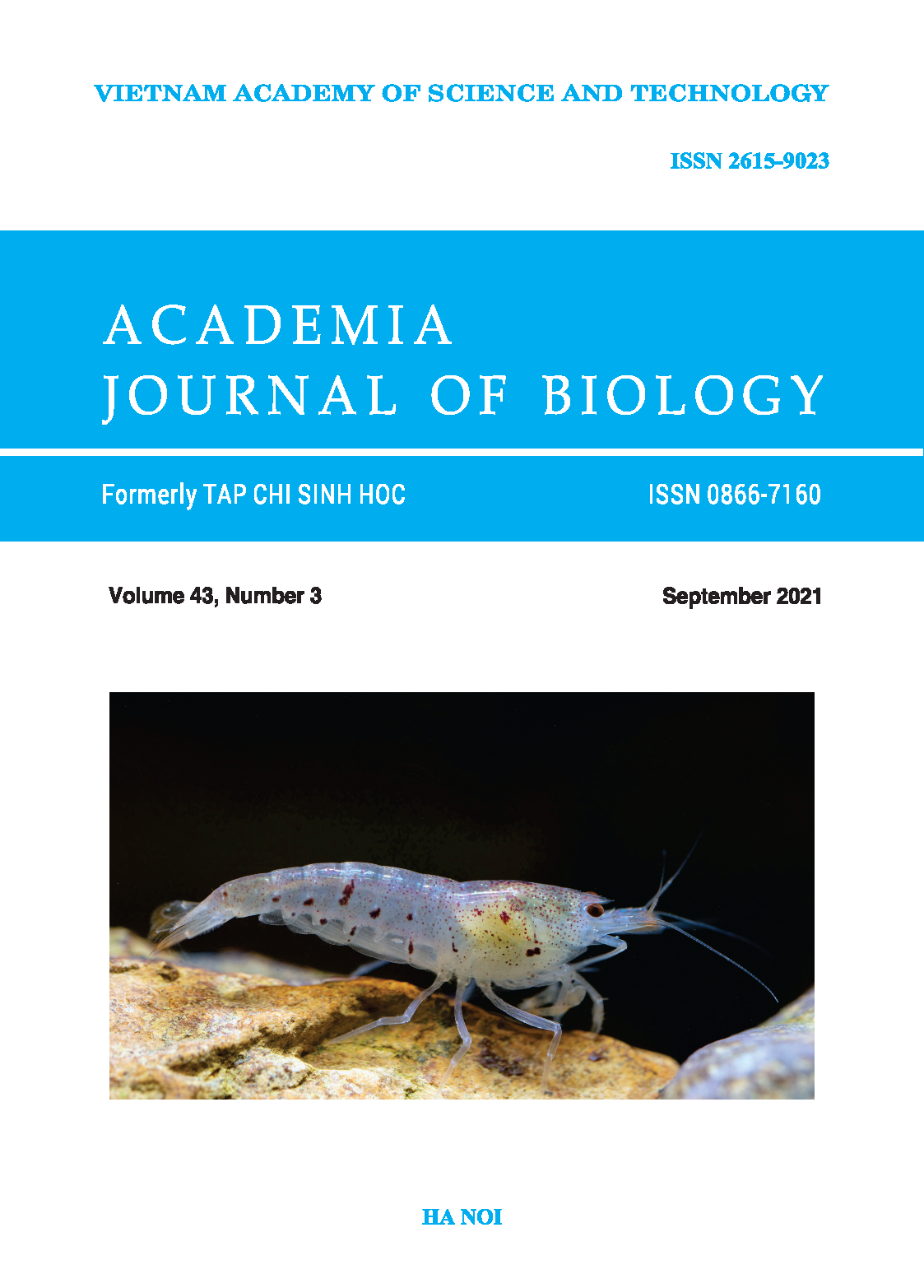Growth and development of \(\textit{Eleocharis ochrostachys}\) Steud. reproduced from its tubers
Author affiliations
DOI:
https://doi.org/10.15625/2615-9023/15908Keywords:
Eleocharis ochrostachys, ecologic condition, development, tubers, life cycleAbstract
In this study, the growth and development of Eleocharis ochrostachys were investigated in a control condition. Its tubers of the plant sprouted to produce stems after being cultured in plastic pots for several days. After 120 days, the plant grew to a height of 42.8 cm on average, stem diameters were from 1.5 to 2.0 mm, and the plant started to bloom and produce tubers. The plant spikelet had dimensions of 1.0–2.0 cm high, 2.0–2.5 mm wide after 120 days. The achenes were formed after 128–130 days, had dimensions of 1.15–1.20 mm long, and 0.5–0.7 mm wide when the plant was cultured for 150 days. The tubers had dimensions of 7.0–9.0 mm long,
4.0–6.0 mm diameter, and were about 0.06–0.1 grams after 150 days. This study provided information on the development of Eleocharis ochrostachys cultured in the greenhouse.
Downloads
Metrics
References
Chandore A. N., Borude D., Kamble M., 2015. Eleocharis ochrostachys (Cyperaceae), a new record for Andaman & Nicobar Islands with a note on the identity of E. swamyi. Rheedea 25(2): 106−108.
Doan Van Cung, 1998. Handbook for soil, water, fertilizers, and plant analysis. Soils and fertilizers research Institute, Agricultural Publishing House, pp. 595.
Huynh Thach Sum, Truong Thi Nga and Le Nhat Quang, 2016. The adaptation characteristics of Eleocharis ochrostachys and Eleocharis dulcis to the environmental soil at Tram Chim National Park. Can Tho University Journal of Science, 4: 134–141.
Huynh Thach Sum, Truong Thi Nga, Le Nhat Quang, 2016. The adaptation characteristics of Eleocharis ochrostachys and Eleocharis dulcis to the environmental soil at Tram Chim National Park. Journal of science Can Tho University, (4): 134−141.
Kapa M. M., Clarkson B. D., 2009. Biological flora of New Zealand 11. Eleocharis sphacelata, kuta, paopao, bamboo spike sedge. New Zealand Journal of Botany, 47: 43−52.
Nguyen Phan Minh Trung, 2012. Researching about the conditions which affect the tubers forming of Eleocharis ochrostachys in Tram Chim Nation Park. Can Tho University, Vietnam, pp. 54.
Nguyen Tien Ban, 2007. Red Data List Part I: Animals. Science and Technology Publishing company–Hanoi, pp. 335.
Nguyen Van Manh, 2010. The study ecological characteristics of (Eleocharis sp.) in Tram Chim Nation Park. Can Tho University, Vietnam, pp. 86.
Pham Hoang Ho, 1999. Vietnamese herbs, volume 3, Young Publishing company, pp. 1020.
Pham Trong Thinh and Nguyen Chi Thanh, 2000. Information sheet on Ramsar wetlands Tram Chim National Park, Tam Nong district, Dong Thap province. Ho Chi Minh City: Dong Thap Provincial Department of Science, Technology and the Environment and Ho Chi Minh City Sub-FIPI, pp. 5.
Quan N. H., Toan T. Q., Dang P. D., Phuong N. L., Anh T. T. H., Quang N. X., Quoc D. P., Quoi L. P., Hanington P., and Sea W. B., 2018. Conservation of the Mekong Delta wetlands through hydrological management. Ecological Research 33: 87−103.
Safford R. J., Duong Van Ni, Malaltby E. and Vo Tong Xuan, 1996. Towards sustainable management of Tram Chim national reserve, Vietnam. Proceedings of a workshop on balancing economic development with environmental conservation. Royal Holloway Institute for Environmental Research, London, pp. 143.
Steudel E. G. von, 1855. Synopsis Plantarum Glumacearum, 2: 80.
Tram Chim Nation Park, 2013. Planning for conservation and sustainable development of Tram Chim National Park for the period 2013–2020, pp. 180.
Truong Thi Nga, Nguyen Van Manh, 2011. Study on environmental features of Eleocharis communities in Tram Chim national park. Vietnam Society of Soil Science, 36: 83–88.
Vo Van Chi, 2003. Common botanical dictionary, Volume 1. Science and Technology Publishing Company,
pp. 1255.
Zich F. A., Hyland B. P. M., Whiffen T., Kerrigan R. A., 2020. Eleocharis ochrostachys. Australian Tropical Rainforest Plants Edition 8 (RFK8). Centre for Australian National Biodiversity Research (CANBR), Australian Government, pp. 125.












